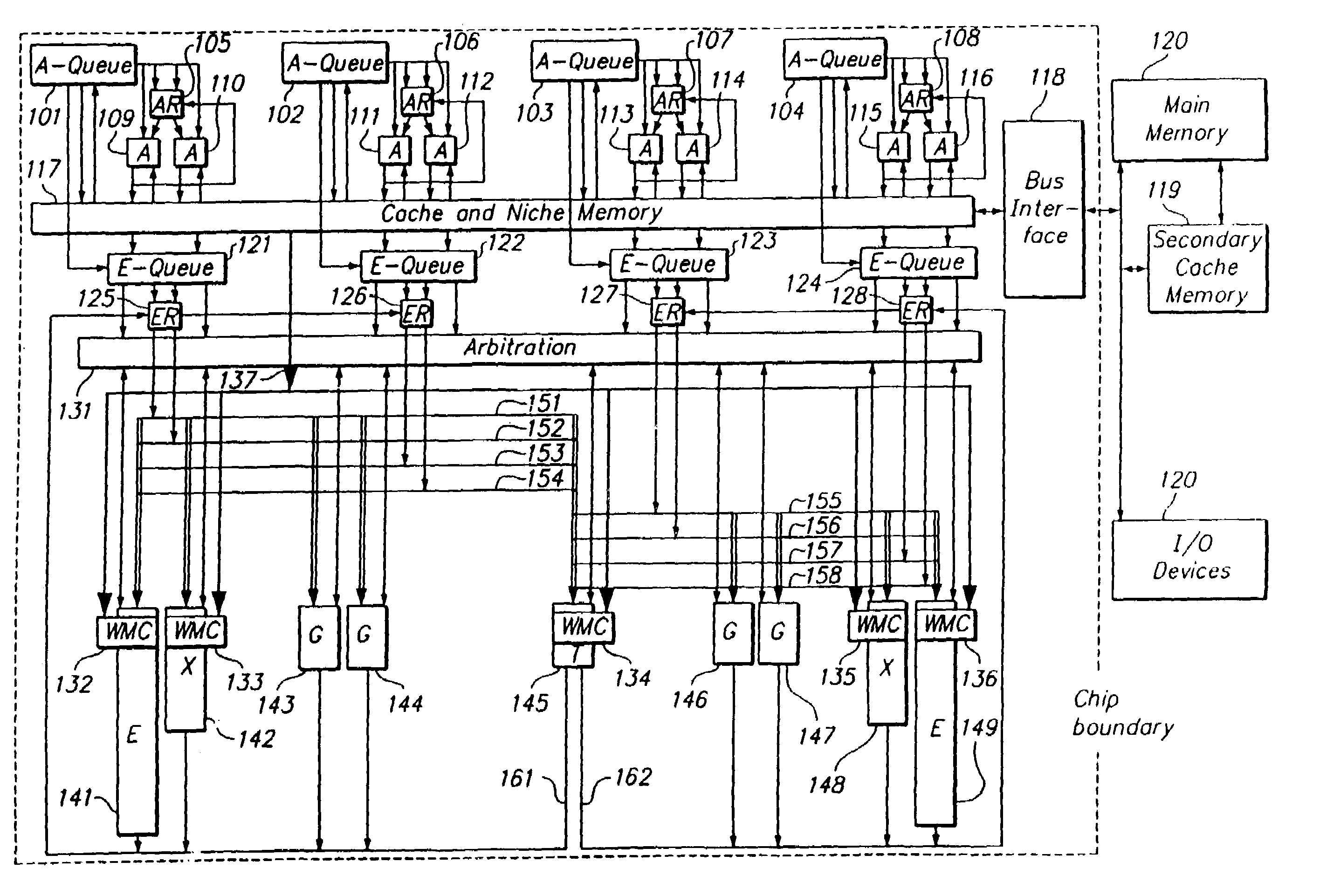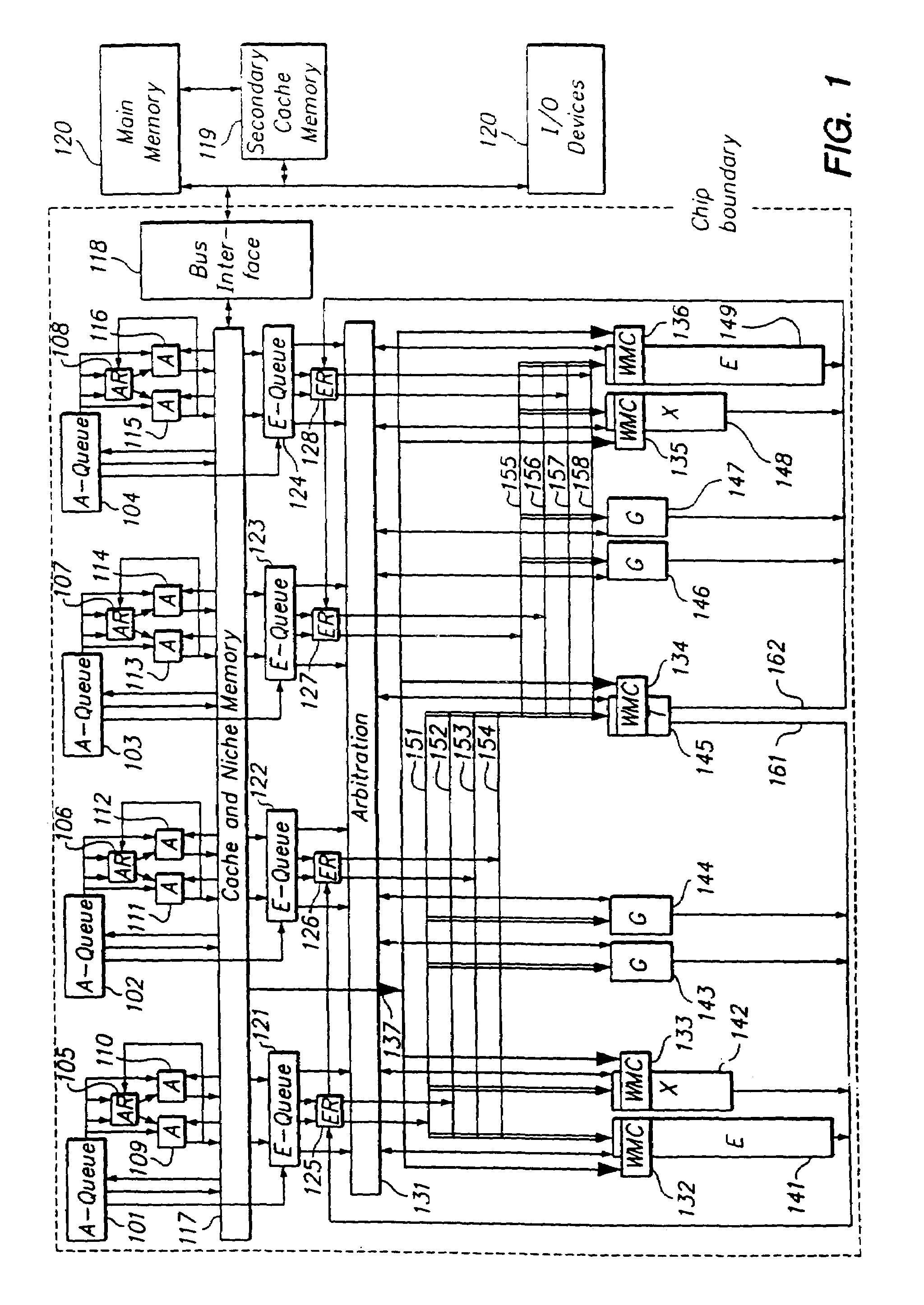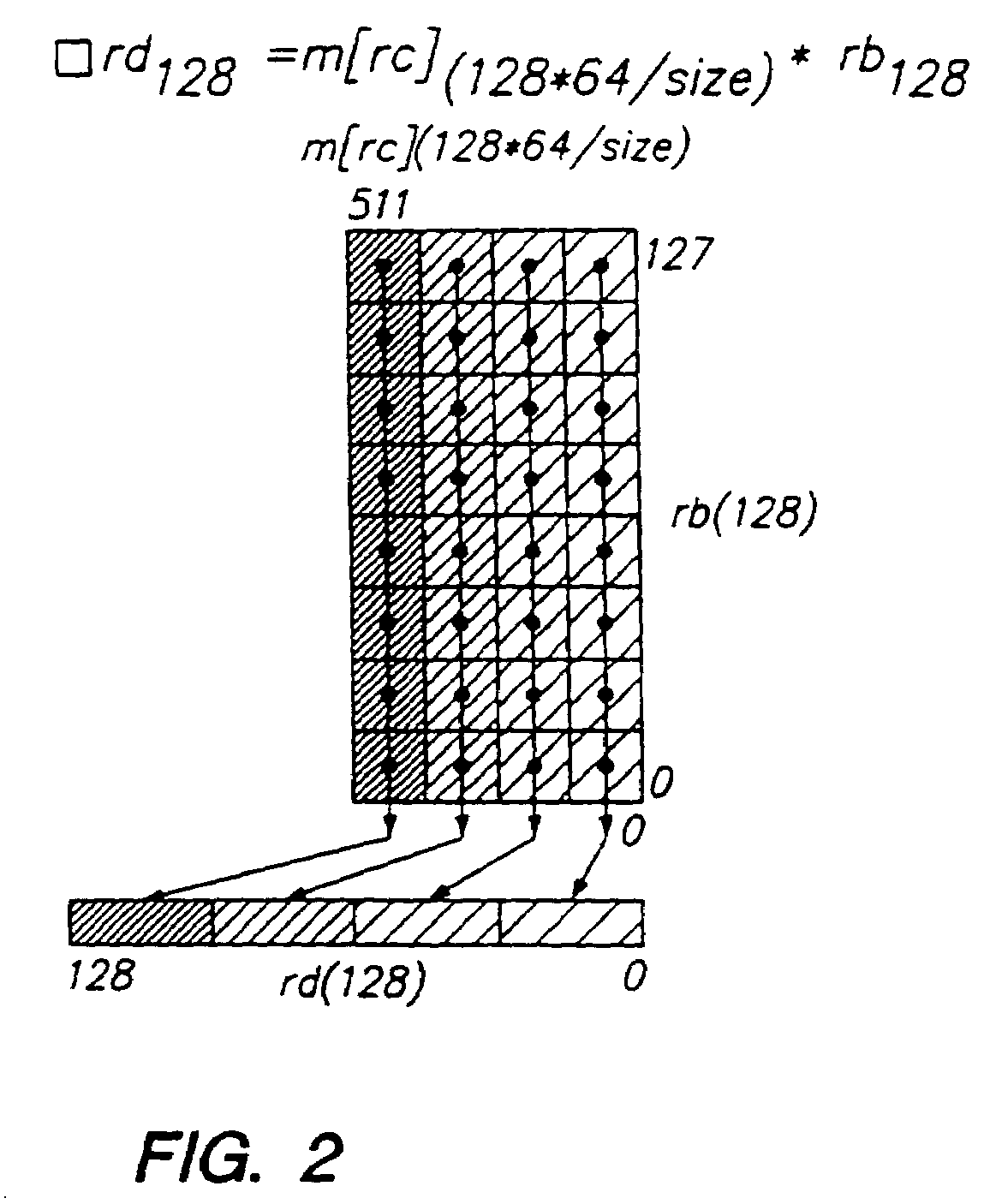Programmable processor and method for partitioned group element selection operation
a processor and element selection technology, applied in the field of general purpose processor architectures, can solve the problems of higher implementation cost and increased instruction latency, and achieve the effects of enhancing processor flexibility, improving performance, and improving performan
- Summary
- Abstract
- Description
- Claims
- Application Information
AI Technical Summary
Benefits of technology
Problems solved by technology
Method used
Image
Examples
Embodiment Construction
[0078]Referring first to FIG. 1, a general purpose processor is illustrated therein in block diagram form. In FIG. 1, four copies of an access unit are shown, each with an access instruction fetch queue A-Queue 101–104. Each access instruction fetch queue A-Queue 101104 is coupled to an access register file AR 105–108, which are each coupled to two access functional units A 109–116. In a typical embodiment, each thread of the processor may have on the order of sixty-four general purpose registers (e.g., the AR's 105–108 and ER's 125–128). The access units function independently for four simultaneous threads of execution, and each compute program control flow by performing arithmetic and branch instructions and access memory by performing load and store instructions. These access units also provide wide operand specifiers for wide operand instructions. These eight access functional units A 109–116 produce results for access register files AR 105–108 and memory addresses to a shared m...
PUM
 Login to View More
Login to View More Abstract
Description
Claims
Application Information
 Login to View More
Login to View More - R&D
- Intellectual Property
- Life Sciences
- Materials
- Tech Scout
- Unparalleled Data Quality
- Higher Quality Content
- 60% Fewer Hallucinations
Browse by: Latest US Patents, China's latest patents, Technical Efficacy Thesaurus, Application Domain, Technology Topic, Popular Technical Reports.
© 2025 PatSnap. All rights reserved.Legal|Privacy policy|Modern Slavery Act Transparency Statement|Sitemap|About US| Contact US: help@patsnap.com



